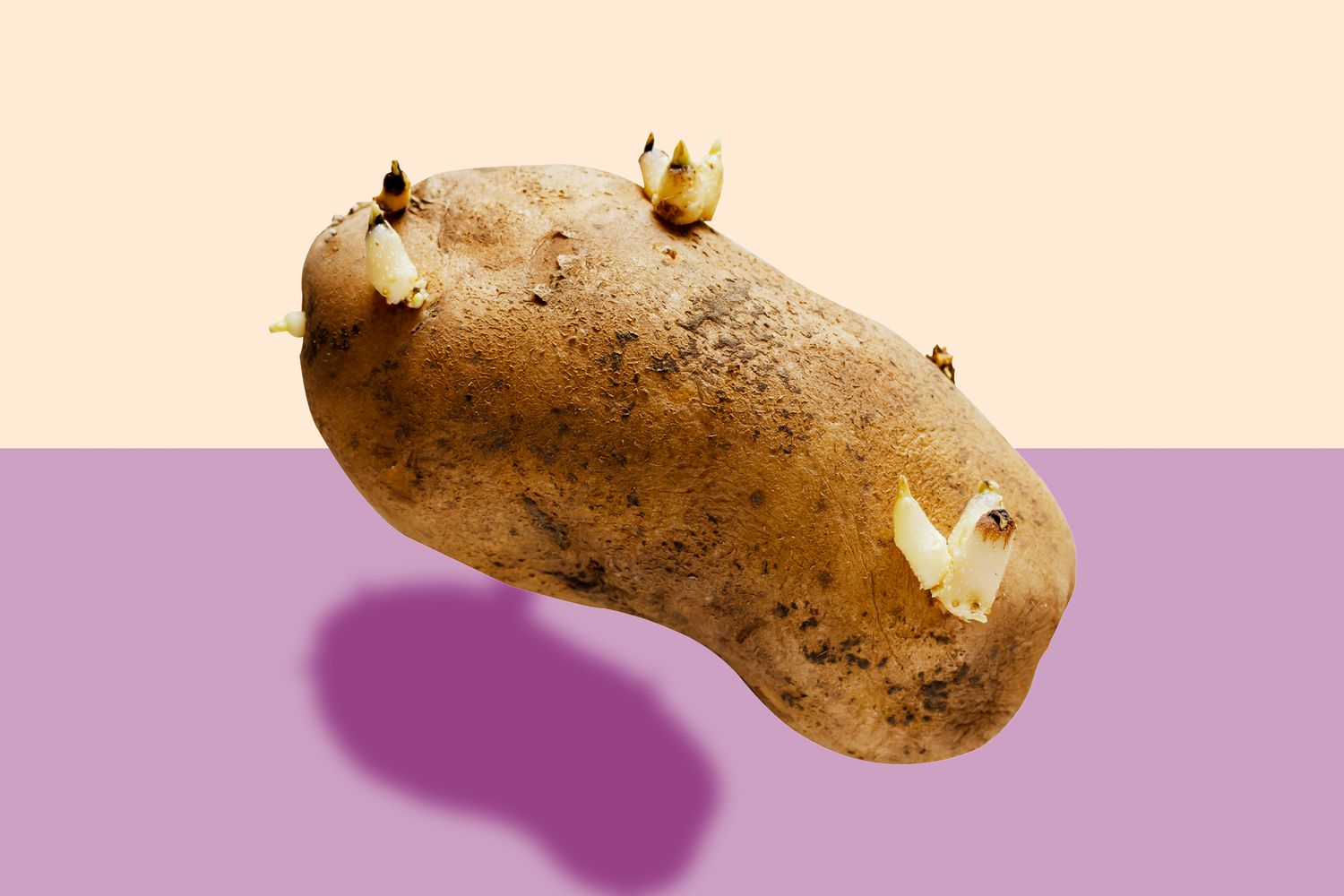
Is It Safe to Eat Sprouted Potatoes? A Toxicologist Settles the Debate
Key Takeaways:
- Sprouted potatoes have an increased concentration of natural toxins called glycoalkaloids.
- You should throw away sprouted potatoes to avoid potential glycoalkaloid poisoning.
- Glycoalkaloid poisoning may cause stomach upset, nausea, diarrhea and, in severe cases, fever.
Potatoes are a nutritious and versatile vegetable—whether fried or mashed, they’re delicious in all forms. Those little spuds pack plenty of health benefits and are rich in fiber, vitamins and minerals. And while most potatoes are completely safe to eat, potatoes that have sprouted or have green spots contain a higher level of a natural toxin that might make you sick after consumption. That’s why it’s best to monitor the appearance of the potatoes you’re storing.
Lauren Harris-Pincus, M.S., RDN, author of The Everything Easy Pre-Diabetes Cookbook and The Protein-Packed Breakfast Club, explains, “Potatoes contain two kinds of glycoalkaloids, both natural toxins, called solanine and chaconine, and while the whole potato contains these glycoalkaloids, the concentration is highest in the eyes, green skin and sprouts that form.”
The green hue actually comes from chlorophyll, which isn’t toxic, but its green color is a good indication that there’s excess glycoalkaloid concentration and that you’ll want to toss the potato out. “Fresh potatoes should not look sprouted or have any green hue on the skin,” says Harris-Pincus.
As they age, or with improper storage, potatoes may develop sprouting and green spots. If there isn’t any sprouting, you can use the color change as an indicator of spoilage. If the skin looks greenish or if there’s sprouting present, you’ll need to remove the sprouts or toss the whole potato, depending on severity.
Why It’s Not Safe to Eat Sprouted Potatoes
Sprouting means that the toxin levels are too high and the potato is no longer safe for consumption. According to Andrew Stolbach, M.D., M.P.H., a toxicologist and emergency physician with the Department of Emergency Medicine at Johns Hopkins Hospital, the glycoalkaloids in sprouted potatoes can cause some pretty uncomfortable symptoms.
“Glycoalkalkoids cause gastrointestinal upset—cramps, diarrhea, nausea and vomiting,” Stolbach says. “In theory, people can lose their blood pressure, have fever, neurological symptoms and even die, but this is extraordinarily rare. Most people will just experience mild gastrointestinal upset.”
There have been a few rare cases of death after eating toxic potatoes, according to a 2024 study in the Journal of Experimental and Basic Medical Sciences. The onset of symptoms is typically within a few hours, but it can take up to a day in some cases. Generally, poisoning from toxic potatoes can be treated at home. With that said, it wouldn’t hurt to at least speak with your healthcare practitioner as they may recommend being seen.
How to Reduce Toxicity
Ultimately, the best way to protect yourself is to toss out potatoes containing green patches or sprouting. However, if you do notice sprouting or a green tint in some areas, you can try and remove them with a sharp paring knife and still cook with the rest of the potato—although it’s important to note that this isn’t recommended.
“These natural chemicals are not removed by frying, baking, microwaving or boiling,” Stolbach says. “Cutting off the sprouts and green skin will decrease, but not eliminate, your exposure.”
We should also note that while eating the potato skin will provide more nutrients, including fiber, the skin is where the majority of the toxins reside when there are sprouts or green spots. “I use a paring knife to dig out the eyes once I have snapped off the sprout, and if there is more than a small area that looks green, I throw away the potato,” says Harris-Pincus.
How to Store Potatoes to Reduce Sprouting
While the Costco-sized bag of potatoes might be tempting, Harris-Pincus suggests only buying potatoes as you need them to prevent spoilage. “If you do have extra, store them in a cool, dark place and make sure to keep them away from onions, which release gases and can cause potatoes to sprout faster,” advises Harris-Pincus.
Keep potatoes in a cool, dark and well-ventilated place, such as a pantry or cabinet. Avoid high temperatures, keep them away from kitchen appliances and make sure they’re away from direct sunlight—in other words, your countertops might not be the best spot for your spuds. “Excess exposure to light causes a buildup of the solanine that turns the skin green,” explains Harris-Pincus.
It’s also worth noting that you shouldn’t put potatoes in the refrigerator or freezer prior to cooking unless you partially cook them first. “Colder temperatures lower than 50°F cause a potato’s starch to convert to sugar, resulting in a sweet taste and discoloration when cooked,” says Harris-Pincus.
To help your potatoes last longer, keep them loose and in a dark area at room temperature—like in a wire basket in your pantry. And lastly, wait to wash your potatoes until you’re ready to cook them, as any dampness could also cause early spoilage. This is also why pre-washed potatoes will not last as long after you buy them.
The Bottom Line
Potatoes can be a healthy, tasty part of a varied diet. But potatoes that have green spots or sprouts can contain toxins, so unless you can completely cut those parts out, it’s best to toss them. Store potatoes in a cool, dry, dark place to prevent sprouting and premature spoilage.










